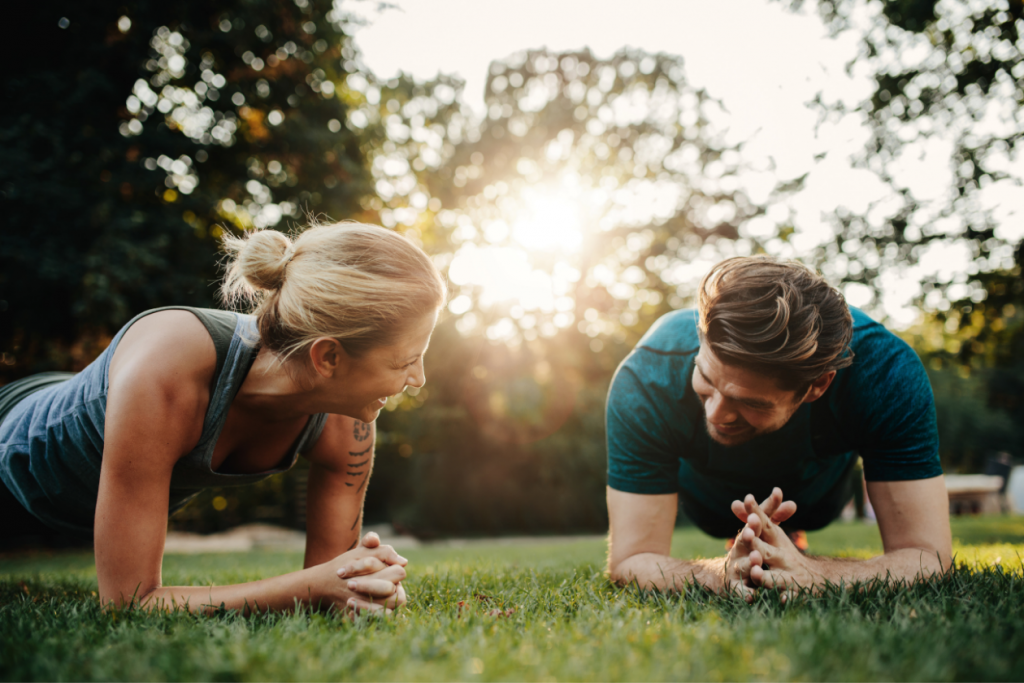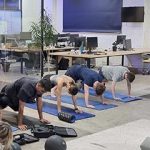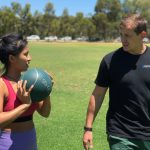A Core workout for Anytime – Anywhere
As Mobile Personal Trainers, our team at Functional For Life are experts at prescribing highly effective outdoor exercises that can be performed with little to no equipment and minimal space. It is also our experience that simply ‘not knowing what to do’ when it comes to working out, is a barrier holding people back from getting started.
As a personal training team, it is our mission to help as many people as possible take action on their health and fitness goals. Whether that be in person, one on one and small group training, or through creating content to help people understand how to make a start on their own. In this blog we endeavour to provide you with a range of exercises designed to work your core muscles, denoting our view on the difficulty level of each exercise.
We will also provide some theory on how to build your core up for strong and functional movement and why it is important to have a strategy when it comes to core training. If you simply want to view the exercises, scroll down now! If you are like us and interested in the ‘Why’ behind training this next section is for you. Either way, we hope you pull out your yoga matt find a nice outdoor location and give this workout a go!
Why you need a core workout strategy:
Often when people think about doing a core workout exercises like the ‘plank’ and ‘sit ups’ spring to mind. Whilst it is true both these exercises work the core, they in fact provide very different outcomes. We believe when working to improve our core strength and function, we need to consider three areas:
- Dysfunctions in the area
- The inner unit
- The outer unit
Dysfunctions:
Our muscles can default into poor postural positions for various reasons, ranging from lifestyle factors to injury compensation. An example of this is as follows. If we sit down for long periods of time, day in day out. Our rectus abdominis muscles are likely to get tight and chronically shortened. At the same the muscles in our back may be constantly in a stretched position leading to them becoming chronically lengthened. Whilst this is an over simplified example, it is this variance in muscle groups being overly tight or overly flexible that leads to dysfunction. It is important we work to improve our overall function in conjunction with our core strengthening program. This is best done through mobility exercises and release work. We have included some useful stretches in the workout below.
The inner unit:
The “Inner Unit” is a very special group of muscles that are the true basis for effective core stability. They work together to control the spine and pelvis. Accoriding to Akuthota et al Core stability and its motor control have been shown to be imperative for initiation of functional limb movements, as needed in athletics. Sports medicine practitioners use core strengthening techniques to improve performance and prevent injury. Core strengthening, often called lumbar stabilization, also has been used as a therapeutic exercise treatment regimen for low back pain conditions. In other words having a strong and engaged inner unit, is the foundation for biomechanically efficient movement and plays a major role in reducing the chances of experiencing chronic back pain. Setting your body up for pain free efficient movement entails having a strong inner unit and for this reason most of the exercise below focus on enhancing this.
The outer unit.
As with the inner unit, the outer unit also provides stability. However it plays a major roll in controlling range of motion and generating movement. The outer unit consists of the muscle groups that are often associated with core training i.e. ‘the six pack abs and the obliques’. It is still incredibly important to have strong, functional and synchronised outer unit muscles. However it is our view that a good core training program includes exercises that build up both the inner and outer unit. Therefore, if your core program has consisted of exclusively doing sit ups, we highly recommend you change this and focus on a workout including mobility and exercises for both the inner and outer unit. For more information, find out more about how you should do your core training.
Lets get started:
Without further ado it is time for the workout. The intention of this outdoor workout is to simply give you ideas on what you can do to build up your core. It is up to your discretion as to which exercises you choose (If any) and to vary your own sets and reps. Our general recommendation is you choose exercises appropriate to your level of fitness and conditioning and perform each exercise for 40-60 seconds. We hope you find some value in this outdoor core workout!
Your No Equipment – Core Workout
Mobility
As mentioned above it is recommended we not only work on strengthening and activating our core muscles through a core workout. We should also focus on mobility in the core area. The basic stretching/mobility exercises will help you to prime yourself for core exercises to follow. If you are after a more detailed mobility program, we have more information about strength and mobility to avoid lower back pain.
Core Exercises
Difficulty Level – Beginner
Focus – Inner Unit
- Ensure a neutral spine is maintained throughout (back not dipping down or arching up too much)
- Draw belly button in when holding this position
- To advance this you can move to an elbows and toe plank
Difficulty Level – Beginner
Focus – Inner Unit
Tips:
- Aim to keep hips and torso still and square as you extend your opposing arm and leg
- Aim to maintain a neutral spin as you go through the movement
Difficulty Level – Beginner/Intermediate
Focus – Inner Unit + Outer Unit
- Ensure shoulders are holding torso up, shouldn’t feel tension in neck
- Slow and controlled movement in either direction
Difficulty Level – Intermediate
Focus – Inner Unit
- Slow and controlled movement throughout
- Ensure lower back stays on the ground throughout the movement
- If feeling tension in the back, bend the knees throughout movement or go to one leg at a time with bent knees
Difficulty Level – Intermediate
Focus – Inner Unit
Tips:
- Ensure your lower back is pressed into the ground throughout this movement.
- Ensure shoulders are driving the torso up, neck should not be holding the tension
- If you feel it in your lower back, don’t fully extend the leg and have a slight bend in the knee of the lowering leg
Difficulty Level – Intermediate
Focus – Inner Unit
Tips:
- Aim to keep the torso and hips, still and aligned as you bring your hand towards your shoulder
- Breathe out in a slow and controlled manner as you draw your hand up towards your opposing shoulder
Difficulty Level – Advanced
Focus – Inner Unit
Tips:
- Lock in the core and move as one unit through this.
Difficulty Level – Advanced
Focus – Outer Unit – Rectus abdominis and obliques
Tips:
- Slow and controlled movement throughout
- Keep a neutral spine when rotating left and right
Difficulty Level – Advanced
Focus – Inner Unit + Outer Unit
Tips:
- Ensure grounded elbow is directly under shoulder
- Aim to have hips up as high as possible
- Ensure the rotational movement is slow and controlled
Summary:
A strong and functional core plays an important role in functional and biomechanically efficient movement. The core provides both stability to the spine and torso through the inner unit as well as movement which the outer unit plays a greater roll in. A holistic core workout will work both systems, however in terms of building strong foundations for movement, we recommend a greater focus on the inner unit. Finally, when it comes to exercise it is essential you engage in exercises that are appropriate for you and in accordance with your level of fitness, confidence and understanding of movement. Form and technique is always the most important factor in any exercise. If you are after more workout ideas, learn more about simple outdoor workouts and equipment free outdoor workouts with us. Happy training!
References:
Perfectformphysio.com.au. 2008. Anatomy – The Inner Unit. [online] Available at: <https://perfectformphysio.com.au/wp-content/uploads/2014/01/Anatomy-Inner-Unit.pdf> [Accessed 14 February 2021].
Akuthota, V., Ferreiro, A., Moore, T. and Fredericson, M., 2008. Core Stability Exercise Principles. [online] https://journals.lww.com. Available at: <https://journals.lww.com/acsm-csmr/fulltext/2008/01000/core_stability_exercise_principles.14.aspx> [Accessed 10 February 2021].
Akuthota, V., Ferreiro, A., Moore, T. and Fredericson, M., 2008. Core Stability Exercise Principles. [online] https://journals.lww.com. Available at: <https://journals.lww.com/acsm-csmr/fulltext/2008/01000/core_stability_exercise_principles.14.aspx> [Accessed 10 February 2021].






